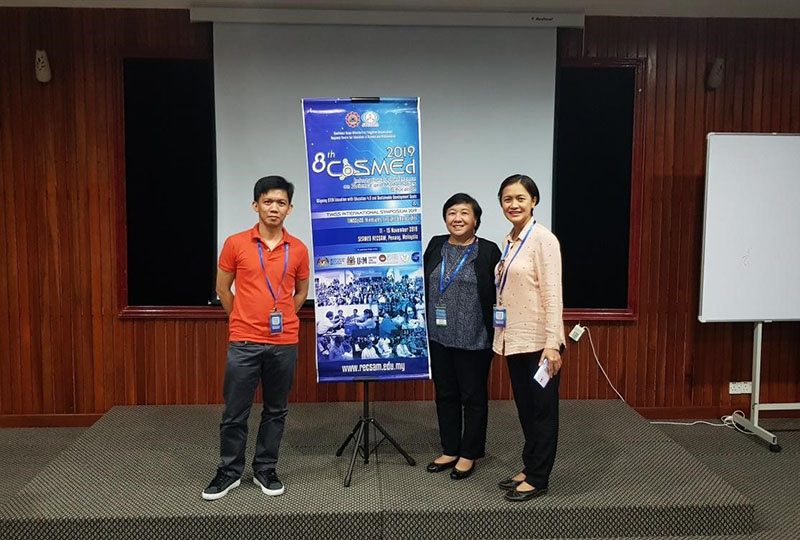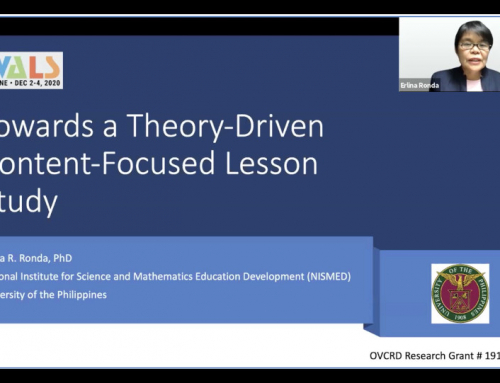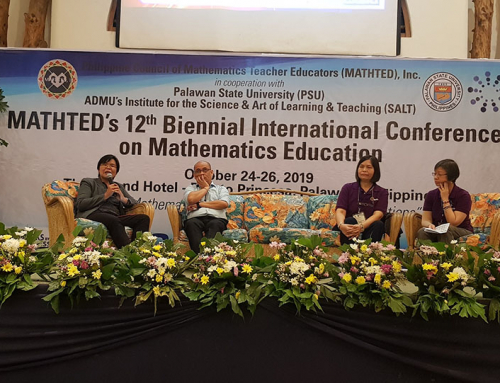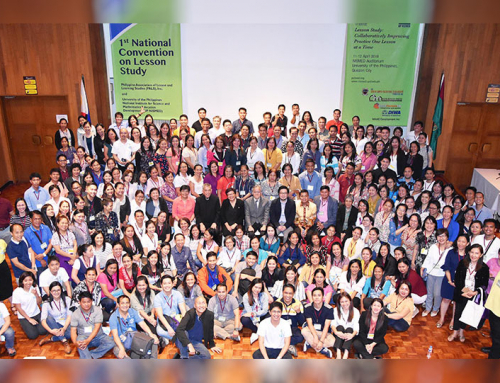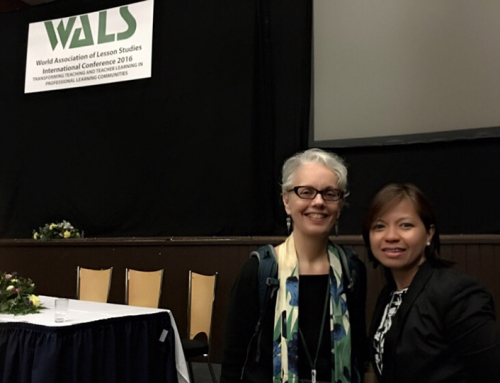Three mathematics education specialists of UP NISMED participated in the 8th International Conference on Science and Mathematics Education (CoSMEd) and TIMSS International Symposium 2019 held at Southeast Asian Ministers of Education Organization Regional Center for Education in Science and Mathematics (SEAMEO RECSAM), Penang, Malaysia on 11-15 November 2019. The theme of the international conference was Aligning STEM Education with Education 4.0 while TIMSS @20: Hindsights, Insights & Foresights for the symposium. The main goal of these two events was “to bring together educators, researchers, and experts related to STEM education and student assessment from all over the world, to share their experiences, innovative practices and pertinent findings and recommend appropriate strategies in bridging the existing gap between theory and practice in the teaching and learning of science, mathematics, and technology in the classrooms.”
At the conference, Dr. Aida I. Yap presented her paper titled “Teachers’ Learning on the Use of Instructional Materials: A Lesson Study”. The paper is about a research lesson on volume of a rectangular prism which was developed by a group of grade 5 teachers engaged in lesson study. Through engaging in lesson study, the teachers learned that special attention should be given to the appropriateness of materials especially in terms of its physical attributes and usage. In his paper titled “Lesson Analysis in Three Lenses: Structure, Quantity, Quality”, Mr. Guillermo P. Bautista, Jr. proposed a three-lens framework for analyzing video-recorded lessons. The first lens partitions the lesson into blocks and provides a brief description of each block. The second lens examines the duration spent by the teacher for each block. Lastly, the third lens investigates the quality of verbal questions asked by the teacher during the lesson. The framework was designed to provide teachers with an analytic tool to evaluate and reflect on their own teaching practice. Lastly, Ms. Edna G. Callanta also presented her study titled “Introducing an Innovative Teaching Strategy through Lesson Study: Perceived vs Actual Challenges.” The innovative teaching strategy introduced to 33 public elementary school teachers was Teaching Mathematics through Problem Solving. Results of the analysis revealed that the anticipated challenges of the teachers were the same as those they had experienced. These challenges were pupils and class characteristics, classroom space and instructional materials, teachers’ readiness to collaborate, lack of time, and developing and implementing a lesson. However, there was a change in the number of teachers who perceived and experienced each challenge.

